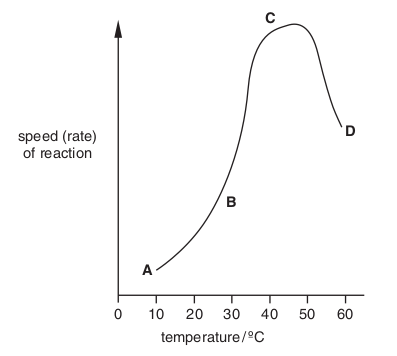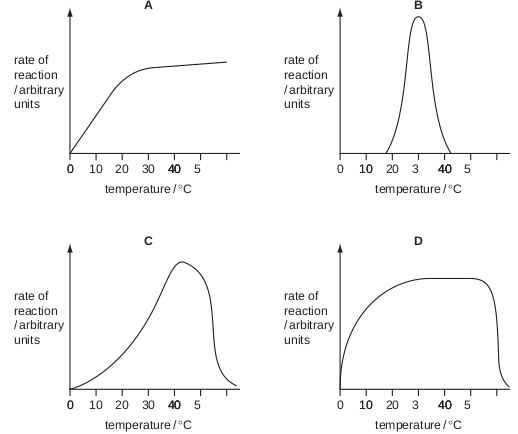Enzyme Quiz 2
15 QuestionsQuiz Description
Enzyme quiz 2, a Biology quiz with questions for A level students preparing for SATs, GCE, and even GCSE. This is Enzyme quiz 2, and it is a continuation of Enzyme quiz 1 . Enzymes are very vital for the body and studies to have shown that studying enzymes to their fullest can actually lead to specialization as a profession, also in the medical field.
Enzymes are simply biological catalysts that play a key role in speeding the biochemical reactions of the system, and remain unchanged at the end of the reaction. They function by binding themselves to active sites of substrates, after which a product is now released. This action is in two ways, the lock and key hypothesis and the induced feed mechanisms
Many quizzes on other subjects can be found by clicking here. For more knowledge on Enzymes, click on Enzymes 1. Now test yourself by taking the quiz, which will teach you even more.
enjoy!!
Cubes of hard-boiled egg white are placed in test-tubes containing 5 cm 3 of water. Other
substances are added to each tube as shown in the chart. The tubes are left for eight hours and
then tested for amino acids.
Which tubes show that pepsin is an enzyme?
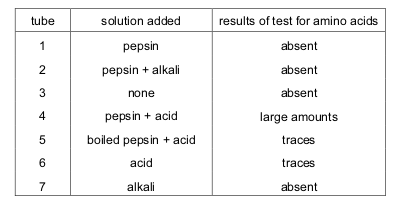
Protease breaks down proteins into amino acids.
In the ‘lock and key’ hypothesis, what is the lock and what is the key?
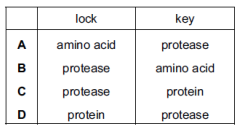
In an experiment to investigate the effects of heat on germinating barley grains, three petri
dishes were set up as shown in diagram 1 and left for 3 days. A solution of iodine in potassium
iodide was then added to the starch-agar substrate. The results are shown in diagram 2, in which
the shaded areas went blue / black, indicating the presence of starch.
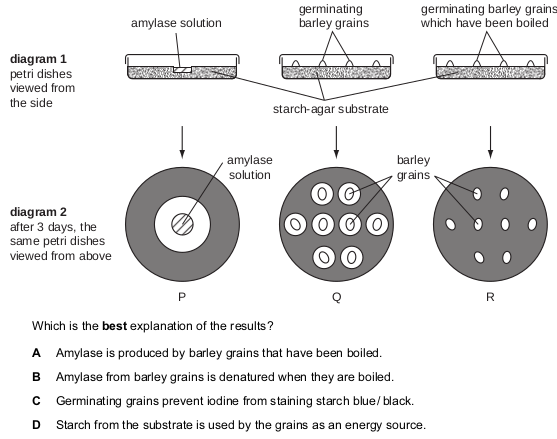
Enzyme action can be explained by the lock and key hypothesis.
Where is the active site and which acts as the lock or key?
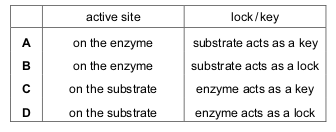
An experiment was set up to investigate the effect of an enzyme on coagulated egg albumen.
The results, after three hours, are shown in the diagram.
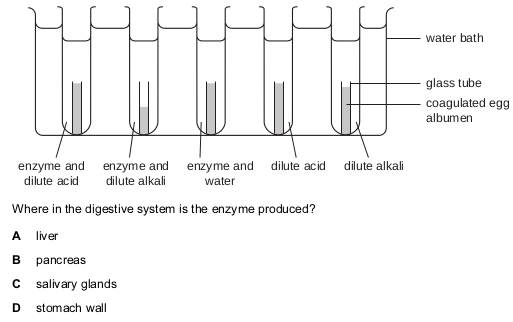
Only two of the following statements accurately describe what happens in the mouth.
1 Amylase breaks down large starch molecules into smaller maltose molecules.
2 Chewing increases the surface area of food for digestion.
3 Saliva emulsifies fats into smaller droplets.
4 Teeth break up large insoluble molecules into smaller soluble molecules.
Which statements are correct?
The diagrams represent an enzyme molecule and its substrate.
Which diagram shows these molecules after they are heated to 100 o C?
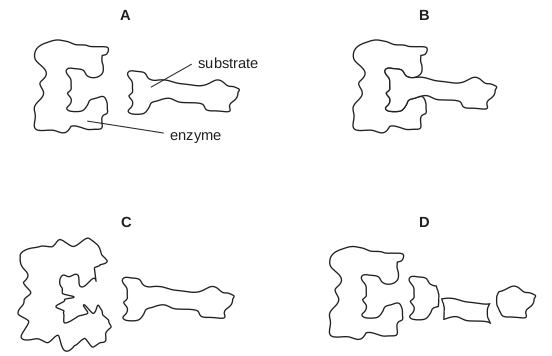
Which chemical test shows the presence of an enzyme in a biological washing powder?
Which graph shows how an enzyme catalysed reaction in the alimentary canal varies with
temperature?
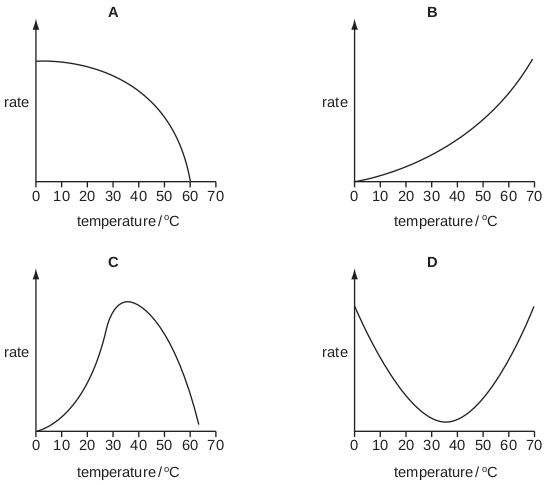
The diagram represents stages in the breakdown of starch to maltose by the enzyme amylase.
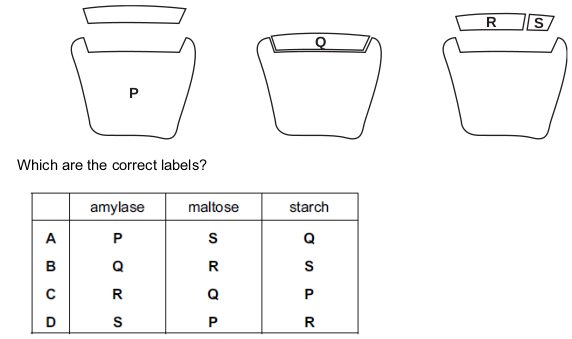
A dish is filled with agar jelly containing starch. Four holes are cut in the jelly and each hole is
filled with the different substances shown.
Which hole will be surrounded by the largest area without starch after 30 minutes?
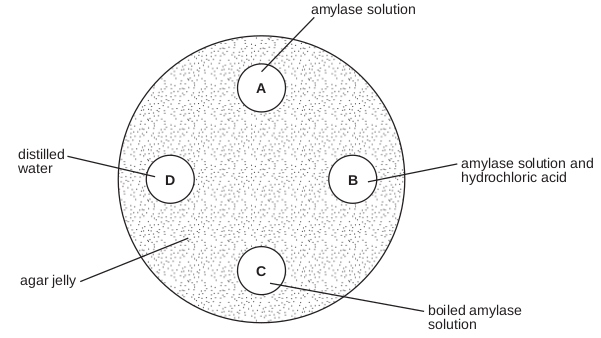
The graph shows the effect of temperature on a chemical reaction which is controlled by enzymes.
At which point are most product molecules being released?
